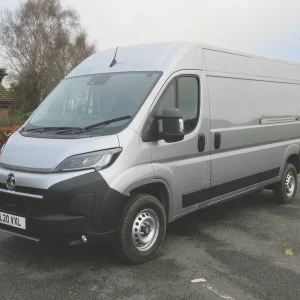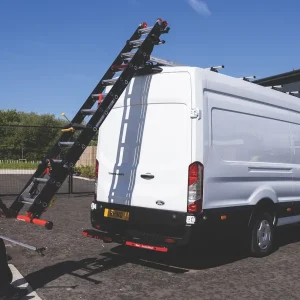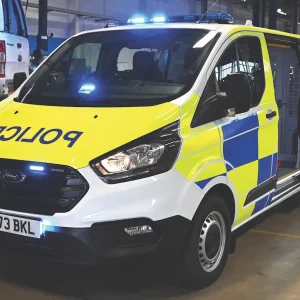With the growing sophistication of new light commercial vehicles coming to market it is easy to become blasé about the amount of equipment with which they are loaded in order to maximize safety and comfort for the driver and other occupants.
But every now and then a new feature comes along that really makes you sit up and take notice.
One such innovation is the Wide View mirror developed by Renault and installed in its new Trafic and revised Master vans as well as their Vauxhall-badged equivalents the Vivaro and Movano.
Like many of the best ideas it is deceptively simple. The Wide View Mirror is obviously not a landmark development in safety terms on the scale of the introduction of the seat belt or the mandatory inclusion of Electronic Stability Control (ESC) on new vans (and all the safety devices this enables) – but like these the device does possess the potential to reduce road accidents and save lives.
Positioned in the centre of the passenger’s sun visor, where it can also serve as a vanity mirror, the visual aid dramatically increases the driver’s view to the rear behind the near-side shoulder of the van by more than doubling the angle of vision towards the rear left of the vehicle on right-hand drive models and vice-versa on left-hand drive vans.
As well as helping the driver to detect the presence of another car, van, truck, motorbike or bicycle that might otherwise be hidden in the blind spot, it helps visibility when driving past other vehicles or when reversing by enabling a view that would normally be obscured with a full bulkhead fitted.
The Wide View Mirror is not a standard fit on all Renault models, as it is on both available specifications of the Vauxhall Vivaro. On the Trafic, for example, it makes its entrance on the mid-trim Business+, but this should not deter customers as it is such an inexpensive item, only costing £50, excluding VAT, to fit as an option on entry-level vans.
Bearing in mind the safety benefits it brings, this is remarkably good value when compared to, say, rear view camera parking aids, which are likely to add about £200 to the asking price.
The Wide View Mirror does take some getting used to – it can be intrusive for the passenger, for example, who is forced to stare at their reflection when the driver is using the mirror, but once the manoeuvre is complete the sun visor can be folded out of the way again.
The visual improvement the Wide View Mirror offers can perhaps best be gauged when you go back to a van that doesn’t have it and find yourself pulling out of an angled junction with no over the shoulder visibility whatsoever.
For this reason Renault and Vauxhall’s Wide View Mirror is a worthy winner of our Innovation Award and it would be no surprise to see other manufacturers queuing up to adopt the technology to their own products in the near future.
Did you know?
As well as the Wide View Mirror, the Trafic and Vivaro offer driver aids such as reversing camera, hill-start assist and grip control.
Highly Commended
One of the main concerns holding operators back when it comes to taking on electric vehicles is so called ‘range anxiety’ or more precisely the fear of getting stranded if the battery runs out of juice and you’re miles from a charging point.
The RAC is Highly Commended this year for launching its first mobile electric charging system to cater for EVs.
The firm has equipped one of its patrol vehicles with an EV rescue portable fast-charge unit, which can deliver around 15 miles of range to a stricken vehicle in less than half an hour.
Equivalent to “a gallon of electricity”, the RAC believes this should be sufficient to get the driver home or to the nearest charging point. The 5kW unit, which is capable of completely recharging an electric vehicle’s battery in under four hours, is in service in Birmingham, which the RAC pinpointed due to its well established charging infrastructure.





